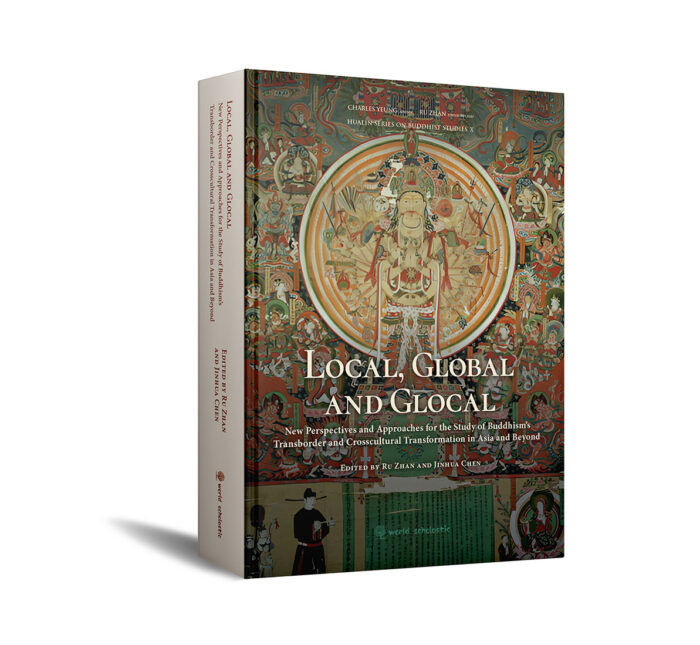佛教修行的叙述
Author: SHINOHARA Kōichi 篠原亨一
Translator: LI Wei 李巍, Liu Xuejun 劉學軍, Chen Zhiyuan 陳志遠, Deng Yuqu 鄧育渠, Wang Kang 汪康, Yang Feng 楊鳳, and Jin Rusha 金如沙
Collated by Ji Yun 紀贇
Hardcover ISBN: 978-981-18-2298-8Publication Date: 2021-10-08
Pages: 566
PRODUCT INFO
Shinohara, Kōichi (trans. Liwei 李巍, Liu Xuejun 劉學軍, Chen Zhiyuan 陳志遠, Deng Yuqu 鄧育渠, Wang Kang 汪康, Yang Feng 楊鳳, and Jin Rusha 金如沙; collated by Ji Yun 紀贇). Fojioa xiuxing de xushu: Hanchuan Fodian de bianji yu fanyi wenti (Xiaoyuan Hengyi zixuan ji) 佛教修行的敘述——漢傳佛典的編輯與翻譯研究(篠原亨一自選集)[Narratives of Buddhist Practice: Studies on Chinese-Language Canonical Compilations and Translations, A Self-Selection by Koichi Shinohara]. Hualin Foxue Yicong 華林佛學譯叢 [Hualin Translation Series on Buddhist Studies] II, 2021.
This book is a Chinese translation of Narratives of Buddhist Practice: Studies on Chinese-Language Canonical Compilations and Translations] (Selected Essays by Koichi Shinohara).
Kōichi Shinohara is a retired Senior Lecturer of Religious Studies and East Asian Languages & Literatures at Yale University. His career has so far spanned half a century, during which time he has studied many aspects of medieval Chinese and Japanese Buddhist texts and images. Although he primarily taught at McMaster and Yale universities, Dr. Shinohara’s research has inspired or deeply touched nearly everyone working in the broader field of East Asian Buddhist Studies.
This volume contains ten of the most important of Shinohara’s long papers, each averaging more than fifty pages. For the most part, the papers collected in this volume were first presented in conferences organized around central themes in Religious Studies, such as hagiography, sacred places, moments of death, and sin and repentance. In these conferences, multiple religious traditions were represented, including Buddhism, Hinduism, Jainism, Daoism from Asia, and often Judeo-Christian traditions from Europe and North America. The topics and the style of analysis in these papers reflect this larger context. Though the material comes from one large tradition, and the discussion sometimes becomes technical, Shinohara does not privilege the insider’s viewpoint but rather adopts the outsider’s comparative perspective. These papers explore these themes through focused readings of a variety of works from the Chinese Buddhist canon. Some of these texts are large compilations produced in China; others are Chinese translations of Indian Buddhist scriptures. The discussions attempt to retrace the texts’ evolution and the lines of thinking that guided the process of compilation.
TABLE OF CONTENTS
《華林佛學譯叢》總序
作者序
一、 傳記與聖蹟
1.1 中國佛教傳記的兩個來源:塔碑銘和神異故事
1.2 從地方史到通史:宋代天台譜系的建立
1.3 佛缽的故事:想像中的傳記與聖地
二、 寺院實踐:戒律與故事
2.1 道宣律師(596-667)所感通的迦葉佛袈裟
2.2 神像故事與敬奉三寶論七世紀中國的形象崇拜
2.3 道宣律疏中的臨終
2.4 高僧傳記中臨終時分的書寫
三、 密教儀軌
3.1 密教消罪儀式:《大方等陀羅尼經》研究
3.2 密宗安像儀式
3.3 尊勝佛頂陀羅尼壇法
參考文獻
索引
REVIEWS
From about the middle of the first millennium CE the Buddhist tradition, as it spread across Asia, came to establish itself in China within a cultural area where preserving knowledge of the past in writing was already a well established practice. This encounter has provided us with copious information about the way in which Buddhism worked not only from within the tradition but also from sources transmitted as part of the general Chinese heritage. These incomparably rich materials can only be exploited by scholars prepared to examine them in detail from both inside and outside the tradition with the requisite qualities of erudition and sympathy. In the English-speaking world Kōichi Shinohara has conspicuously led the way in this, setting clear standards for a whole generation of younger scholars to emulate. —— T. H. Barrett (SOAS University of London)
No-one has done more than Koichi Shinohara to improve our understanding of the nuances and textures of medieval Chinese Buddhism. His close and sensitive readings of primary sources offer a masterclass in textual scholarship. His painstaking unpicking of difficult passages and unending curiosity about their authors and readers are a continuing source of inspiration to all of us. —— James Benn (McMaster University)
The erudition of Koichi Shinohara is splendidly manifested in this volume of selected papers. Here, he masterfully reveals many sophisticated aspects of medieval Chinese Buddhism. His meticulous textual analysis and careful documentation tell the multiple lives of Buddhist texts, doctrines, rituals, figures, and material culture, which often help us refresh our understanding of medieval Chinese Buddhism. Like many other scholars, I benefit from these papers tremendously in both research and classroom teaching. The significant impact of his scholarship on the field will certainly attract numerous readers for generations to come. —— Huaiyu Chen (Arizona State University)
Scholars are well acquainted with Koichi Shinohara’s articles in various publication venues, but there is something special about having them gathered in this collection. One can better appreciate the evolution of his career as he addressed key themes and issues in the study of Chinese religions—from biographies and sacred space to miracle stories and esoteric rituals—all the while grounding his work in the careful reading of a wide range of primary sources. He is known for his work on the All-Gathering Maṇḍala Ceremony—which brought together and synthesized many rituals—and so it is fitting to have his own works brought together. Rather than establish a special bond with a deity by throwing a flower into the maṇḍala, the reader can establish a bond with his ground-breaking scholarship by reading his rich and learned contributions to our field. —— James Robson (Harvard University)
Throughout his long career, Koichi Shinohara produced an extensive body of work covering a diverse range of topics and themes in medieval Chinese Buddhism. Whatever the topic, his writings always evince a keen attention to philological and historical exactitude, coupled with his special gift for uncovering what lies beneath the surface of the textual record. The editors of this volume have done a great service by bringing together ten of Shinohara’s most important (but not always easy to access) articles, each of which testifies to the discerning and insightful manner in which he handles his materials. This collection will serve as a model of superlative scholarship on Chinese Buddhism for generations to come. —— Robert Sharf (University of California, Berkeley)


















